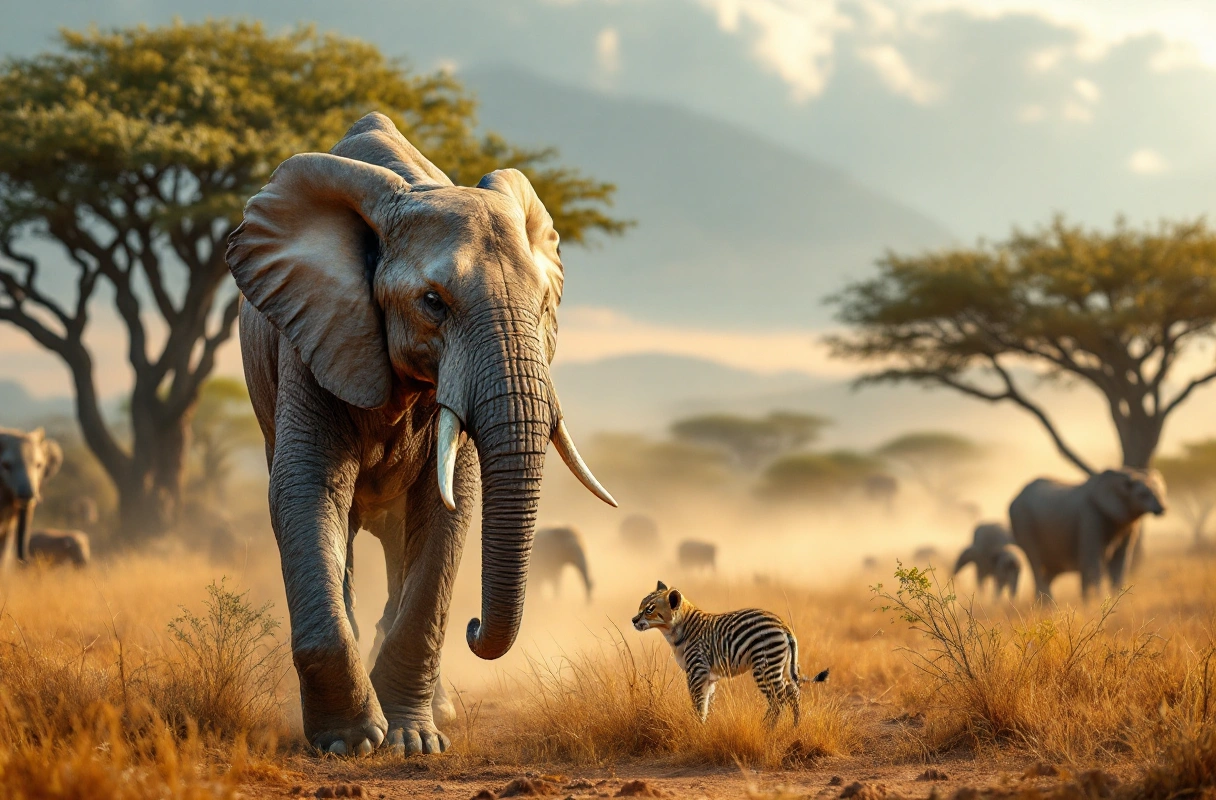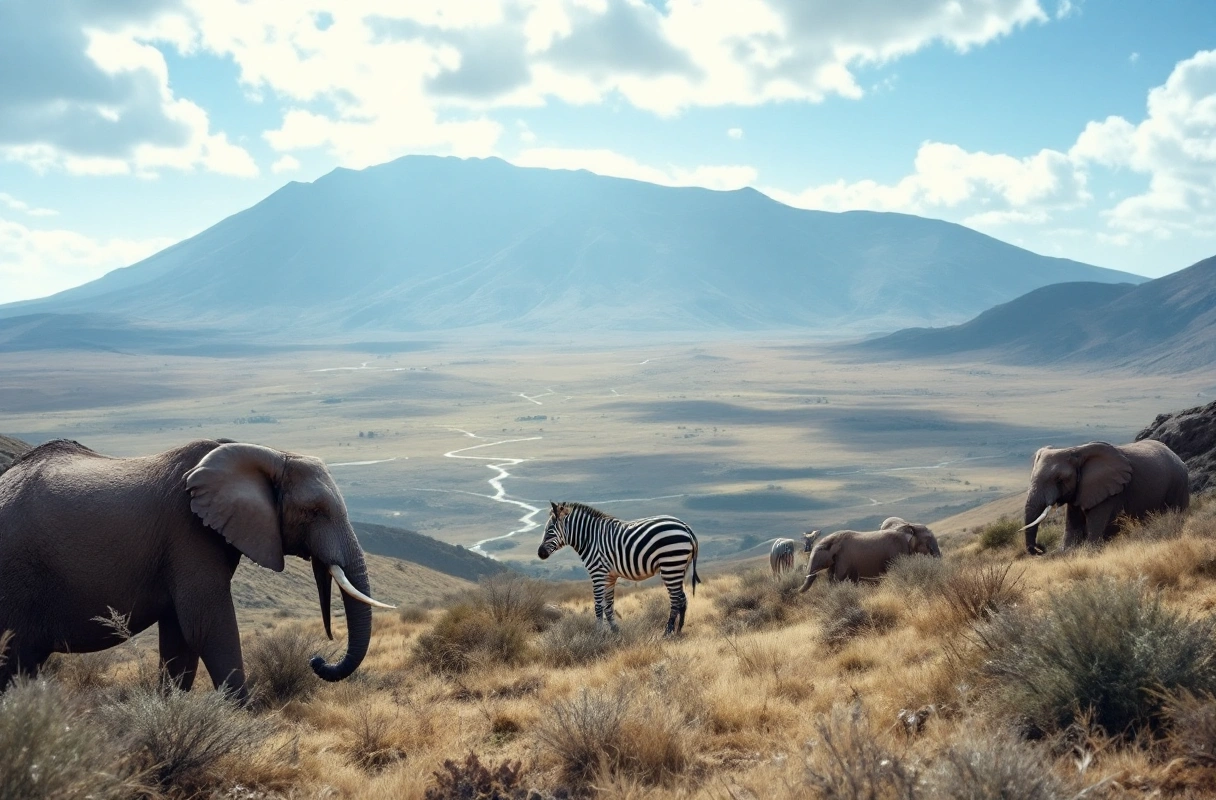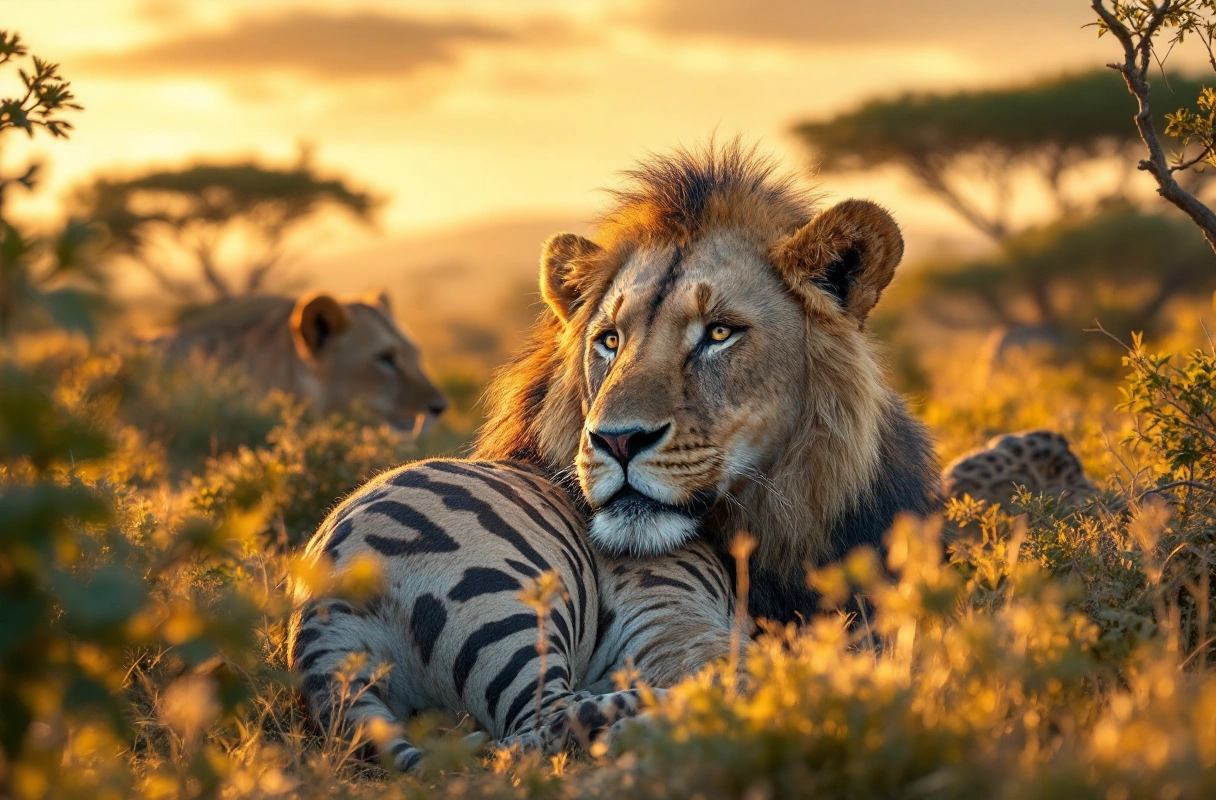
Exploring the rich tapestry of Africa's wildlife is a dream for many nature enthusiasts. Whether you are captivated by the majestic elephants roaming the savannah or the elusive leopards hiding in the brush, experiencing the continent's biodiversity is a transformative journey. However, the approach to this adventure can vary significantly depending on whether one opts for a budget-friendly safari or a luxurious experience. In this article, we will delve into the nuances of both options while highlighting the top ten African animals to see, particularly during a climb up Kilimanjaro.

Budget safaris offer a remarkable way to experience the wonders of African animals without breaking the bank. These safaris typically include shared accommodations, group transport, and guided tours that allow travelers to witness the incredible wildlife. Often, these experiences are tailored to maximize adventure while minimizing costs.
Cost-Effective Accommodations: Budget safaris usually feature tented camps or basic lodges, providing essential comforts without the frills. This allows travelers to immerse themselves in nature while keeping expenses low.
Group Tours: By joining a group, participants can enjoy the camaraderie of fellow travelers while benefiting from shared transport costs and guided tours, making it a great way to meet like-minded individuals.
On the other end of the spectrum, luxury safaris provide an opulent experience that caters to those seeking comfort and exclusivity. These safaris typically include private accommodations, gourmet meals, and personalized services, ensuring a lavish adventure.
High-End Accommodations: Luxury safaris often feature lodges and camps that boast stunning views, private decks, and en-suite bathrooms, allowing guests to unwind in style after a day of wildlife viewing.
Tailored Experiences: With a focus on personalized service, luxury safaris can include bespoke itineraries that cater to specific interests, whether it be photography, bird watching, or cultural encounters with local communities.

As you embark on the adventure of climbing Kilimanjaro, the opportunity to observe unique African animals along the way is an experience not to be missed. Here are the top ten African animals to keep an eye out for during your ascent.
Elephants are often seen in the lower slopes of Kilimanjaro. These gentle giants are known for their intelligence and strong social bonds. Observing them in their natural habitat is a breathtaking experience.
The African buffalo is another iconic species that can be spotted in the grasslands surrounding Kilimanjaro. They are known for their herd behavior and formidable presence.
While leopards are elusive, they do inhabit the lower forested areas of Kilimanjaro. Their solitary nature and incredible climbing skills make them fascinating to observe.
These striking primates can be found in the montane forests of Kilimanjaro. Their unique black and white fur and acrobatic skills add a lively element to the climbing experience.
Bushbucks are shy antelopes that inhabit the forested regions of Kilimanjaro. Spotting one among the dense foliage is a rewarding experience for any wildlife enthusiast.
Warthogs are commonly seen foraging on the lower slopes of Kilimanjaro. Their distinctive tusks and quirky behavior make them a favorite among safari-goers.
Kilimanjaro is home to a plethora of bird species, including the stunning sunbirds and the magnificent raptors. Birdwatching enthusiasts will find plenty to admire.
Although often overlooked, the diverse snake population on Kilimanjaro includes non-venomous species and fascinating reptiles that contribute to the mountain's ecosystem.
These small mammals, often mistaken for rodents, can be spotted on rocky outcrops. Their unique characteristics and social behavior provide an interesting observation opportunity.
While not directly on Kilimanjaro, the nearby regions are home to mountain gorillas, which are a must-see for any wildlife lover. Their conservation status adds an important layer to the experience.

Selecting between a budget and luxury safari experience involves several key considerations:
Budget: Determine how much you are willing to spend. Luxury safaris can range significantly in price, while budget options are generally more affordable.
Comfort Level: Consider your preference for comfort and amenities. If you prefer a more rugged experience, a budget safari may be suitable. If you value luxury, opt for a high-end safari.
Wildlife Interests: Identify which animals you are most eager to see. Some safaris focus on specific wildlife experiences, such as bird watching or big game viewing.
Group vs. Solo Travel: Decide whether you prefer the camaraderie of group travel or the exclusivity of a private safari. This can influence your overall experience.
There are several misconceptions surrounding safari experiences that can lead to poor decisions:
Luxury Equals Better Wildlife Viewing: It is a common myth that luxury safaris guarantee better wildlife experiences. In reality, both budget and luxury safaris can offer remarkable wildlife encounters, depending on the location and timing.
Budget Safaris Are Unsafe: While safety standards vary, many budget safari operators prioritize safety and have experienced guides. Researching operators can help dispel this myth.
To ensure a successful and enjoyable safari experience, consider the following preparation tips:
Research Your Operator: Look for reputable safari operators with positive reviews and strong safety records. This is crucial for both budget and luxury experiences.
Pack Wisely: Bring appropriate clothing and gear. Lightweight, breathable fabrics are ideal for warm days, while warmer layers are necessary for cooler evenings.
Stay Hydrated: The African sun can be intense. Carry water and stay hydrated throughout your journey.
While on safari, keep these tips in mind for a rewarding experience:
Be Patient: Wildlife viewing often requires patience. Stay quiet and still to increase your chances of spotting animals.
Respect Wildlife: Maintain a safe distance from animals and follow your guide's instructions to ensure both your safety and the animals' well-being.
Capture the Moment: Bring a good camera or binoculars to enhance your experience. Documenting your encounters will create lasting memories.
Understanding the seasonal variations in climate can greatly enhance your safari experience:
Dry Season: Generally, the dry season from June to October offers the best wildlife viewing opportunities, as animals congregate around water sources.
Wet Season: While the wet season (November to May) brings lush landscapes and fewer tourists, wildlife can be more dispersed, making sightings less predictable.
As climate change continues to impact ecosystems globally, it is essential to consider its effects on wildlife habitats. Observing changes in animal behavior and migration patterns can provide valuable insights into the challenges faced by African animals today.
As you embark on your journey to explore the captivating world of African animals through safaris, the Banana Slug Club is here to help you deepen your understanding and appreciation of nature. Whether you are a nature enthusiast, student, or simply curious about wildlife, our resources can enhance your learning experience.
Engaging with the fascinating diversity of African wildlife, particularly those seen while climbing Kilimanjaro, opens doors to a world of discovery. The Banana Slug Club offers insights and educational materials that make learning about these incredible creatures both fun and informative.
We invite you to visit our website for more information and resources about African animals and the wonders of nature. Our mission is to inspire and educate individuals of all ages about the natural world, science, and conservation. If you are excited about discovering more about the incredible wildlife of Africa, reach out to us today.
By understanding the dynamics of budget versus luxury safaris and the incredible species that call Africa home, you can embark on a memorable journey that connects you with nature in a profound way.
Get free resources, early access to new features and updates.
No spam. Just fun educational emails!